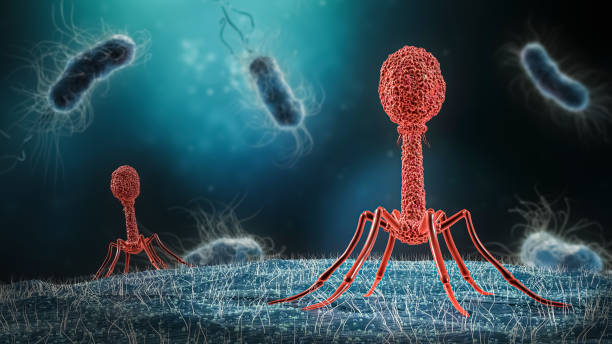What Does Economy Mean?
The word economy has many different meanings. It refers to the system of production, distribution, and demand. Regardless of your field of study, you need to understand the basics of the economy and the way it works. There are also many different types of economies. The word economy itself derives from the Greek word for household management.
Economic system
Economic system is one of the fundamental components of a society. It helps determine the allocation of resources to meet the needs of the society. There are many kinds of economic systems. Some are centralized and others are decentralized. All have similarities and differences. In centralized economies, the government has control over a certain area, such as defense or essential goods. The state encourages entrepreneurship in other areas, however.
In a market economy, the government plays a minor role in the economy. It provides the necessary rules for businesses to flourish. This type of system is sometimes referred to as a free market economy. On the other hand, a planned economy is governed by a central government, similar to those in Cuba or North Korea. This kind of economy has planners that make decisions.
Mixed economies are a hybrid of different economic systems. This type of economy takes the best qualities of all three systems and blends them together. In addition, they are flexible. However, none of the different economic systems is a “magic” solution for every country. Each system has its own strengths and weaknesses, and some may be better for a certain region than others. Hence, it is important to understand both macro and microeconomics to choose the best system for your country.
The traditional economy focuses on the traditions and customs of a country. In this type of economy, people are engaged in trade systems to survive. They largely rely on agriculture and trade, and the policies they follow are affected by culture. This type of economy is typically seen in underdeveloped nations. It is also known as the subsistence economy.
System of demand and supply
The System of Demand and Supply in an economy determines the prices of goods and services. Generally, higher prices boost the supply of a good, and lower prices reduce the supply. The intersection of these two curves defines the market-clearing price, which is determined by many factors, including the demand for a product and its price elasticity. For example, if a commodity’s price is below its cost of production, suppliers will tend to lower their prices to avoid losing money. However, elasticity of price may also be affected by taxes, availability of resources, and other factors.
The Law of Supply and Demand is an economic law that explains how prices are determined. The higher the price of a good, the more producers will supply it. This is true in physical goods markets and in markets for services. The Law of Supply and Demand helps adjust prices, quality, and quantity so that consumers can get the goods or services they need at the right price.
This economic principle governs the relationship between producers and consumers. The basic elements of the supply and demand model are the demand curve and the equilibrium, or point where demand meets supply. This equilibrium price is the point where the market stabilizes. The law of Demand states that a higher price reduces the quantity of a desired good, while a lower price increases the desire to supply the same good.
System of production
In an economy, the system of production consists of the various stages of production. Each stage involves the use of a machine to create the final output. This machinery may be textile or construction machinery. The final output is typically a consumer good or infrastructure that meets a specified requirement. This final output can be private or public goods.
Different types of economies are based on different ideals and systems of control. These controls are set by those in power and govern the activities of industries, governments, and individuals. The aim of a state-run economy is to promote economic development and prosperity for its citizens. This is achieved by creating laws and regulations to guide production.
Capital is another important economic concept. It is the money that allows companies to make purchases and sales. Although money does not create goods, it facilitates the processes of production. For example, it allows company owners to purchase land and pay workers. Mainstream economists consider capital to be the primary driver of value.
Another concept that describes the system of production in an economy is the division of labor. Manufacturing plants are widely dispersed, and the division of labor is the geographical division of labor.
System of distribution
A company’s distribution system can either make it or break it. A good distribution system means the company has a better chance of selling its products and is more likely to survive tough economic conditions. In any industry, distribution is essential to the success of a business. Even the best product can be of no value to the consumer if it’s not readily available.
There are many different types of distribution services. These include wholesale trade, retailing, franchising, and commission agent’s services. While there is some overlap between these sectors, each one has specific commitments. For example, the wholesale trade sector is subject to greater commitments than retailing. These commitments often exclude certain types of products and services.
Another type of distribution is between manufacturers and retailers. In the retail industry, this can be a key part of the business process. Many big-name designers distribute their products to higher-end retail chains. The manufacturing process for automobiles is based on distribution systems. Ford factories, for example, distribute their vehicles to authorized Ford dealerships.
The system of distribution in an economy is a key concept in economics. It shows how income is distributed across society. The most common visual representation of this type of distribution is a pie. This pie represents the total income of a country. The size of the slices reflects the distribution of income.
System of consumption
The system of consumption is the way in which individuals consume and make use of resources. In the past, different forms of consumption have been associated with different sectors of the economy. As the system of consumption has evolved over time, the role of consumption in society has also changed. While earlier periods of consumption were related to social groups, the modern age has made consumption ubiquitous in almost every sector.
The development of new media and new communication technologies has altered the relationship between producers and consumers. While previously, consumption was perceived as an unwelcome source of class division, inequality, and manipulation, today consumption has re-emerged as a form of expression for both the political and commercial domains. It is a source of power and a source of aesthetic satisfaction.
In a society, consumption constitutes two-thirds of GDP. The other third of the economy is made up of government expenditure and net exports. The consumption sector includes three broad categories: durable goods, non-durable goods, and services. Durable goods, as their name suggests, last for more than three years. Non-durable goods, on the other hand, are goods that only last for a short time. As a result, consumers must make a decision between saving or spending it.
In Western European societies, consumption has become a central component of social order. In premodern societies, the relationship between producer and consumer was much closer. For example, a farmer might produce milk, which was in turn traded for soybeans. The relationship between production and consumption was intimately interdependent. Before the rise of capitalism, pre-capitalist societies were based on subsistence production and exchange methods such as barter.
System of unexpected shocks
There are two kinds of shocks in the economy: supply shocks and demand shocks. On the supply side, unexpected changes in prices and production affect the prices of products. For example, if a recession hits, industry will only produce 10 percent of what consumers want to buy. On the demand side, consumers can cut their spending by 90 per cent.
Economic shocks can either be real or nominal, and are generally unpredictable and impactful to the economy. Depending on their nature, they can either be positive or negative, and they can affect any industry. Generally, normal people are most concerned about negative economic shocks. Supply shocks, on the other hand, make it more difficult and expensive to produce goods. For example, a sharp increase in oil prices can cause the price of gasoline to skyrocket.
The effects of news shocks on the economy are not uniform, but their effects on GDP and hours worked and real wage are positive. A surprise shock, on the other hand, has a more severe negative impact than a news shock. The difference between the two shock types is the duration of the shock. The news shock has a delayed impact, whereas the surprise shock has a rapid impact and a delayed response.
Another type of shock is called a pandemic. A pandemic is a combination of supply and demand shocks. A supply shock lowers the capacity of the economy to produce goods, such as a lockdown, while a demand shock lowers the willingness of consumers to buy. People avoid eating in restaurants because they are afraid of the contagion and halt their purchases of all goods.



